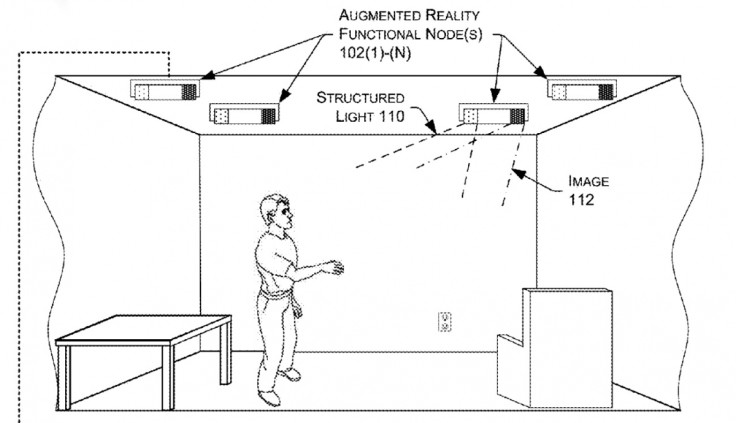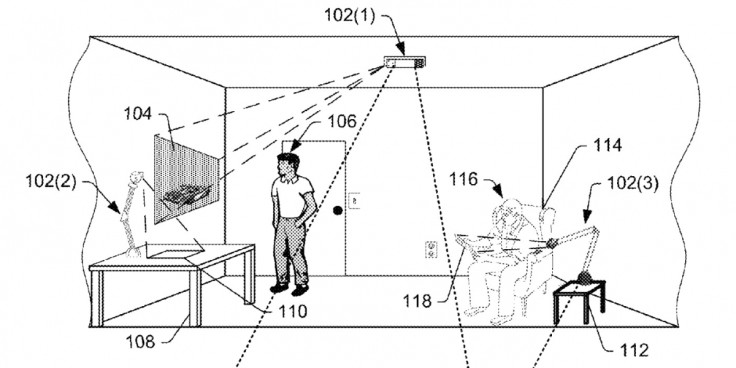Amazon wants to use holograms to turn your living room into an augmented reality

Internet giant Amazon is visualising holograms playing a central role in the living room of the future, according to patents granted by the US Patent and Trademark Office on 1 December. The patents describe a system consisting of computers, projectors, cameras, sensors, microphones and multiple reflectors to beam holograms and virtual objects into your living room and transform it into an augmented reality.
"Augmented reality allows interaction among users, real-world objects and virtual or computer-generated objects and information within an environment. The augmented reality may range in sophistication from partial augmentation, such as projecting a single image onto a surface and monitoring user interaction with the image, to full augmentation where an entire room is transformed into another reality for the user's senses," Amazon writes in one patent document.

The idea is that users could walk into the room and then issue a voice command, tap the wall, snap their fingers or make hand gestures in mid-air, and this would activate augmented reality functions, such as a video game or 3D movie on the walls, tables and floor. The projector could even be used to beam a ball onto your hands which you have to try to hit.
Amazon's concept involves projectors mounted on the ceiling that cast images and holograms of virtual objects onto any surface, as well as a projector that looks just like an extendible desk lamp.
So instead of sitting in a chair holding a physical book or an ereader, the projector could be positioned so the user could instead hold onto a tablet-sized projection screen, and the system would project the pages of a book onto the portable screen, or virtual objects onto a desk, like homework or a recipe book.
Of course these are just patents, rather than prototypes of actual devices, but it is an interesting concept that goes much further than Microsoft's augmented reality head-mounted device, HoloLens.

Amazon's concepts are also along the same lines as patents filed by Samsung, which describe a Google Glass-style device that lets users project app interfaces onto their hands and tables in order to make phone calls and play a virtual piano.
"User interfaces have traditionally relied on input devices such as keyboards, which require physical manipulation by a user. Increasingly however, it is desired to detect and monitor the physical positions and movements of users within a scene or environment," Amazon writes in a second patent document concerning object tracking.
"One challenge with utilising user motions and gestures as inputs to automated systems can be tracking the movement of a user's hand over time. Accordingly, there is a need to improve ways to track the hand of a user within a scene or environment."
This is not the first time Amazon has tried to create a 3D display – its Fire Phone came with a 3D display technology called Dynamic Perspective where four front-facing cameras would track the user's head movements to make sure that the objects on the screen always look 3D no matter which angle you look at it.
Sadly the phone failed to impress consumers and in August Amazon laid off dozens of engineers that worked on it at its secretive hardware development centre, Lab126.
© Copyright IBTimes 2025. All rights reserved.






















